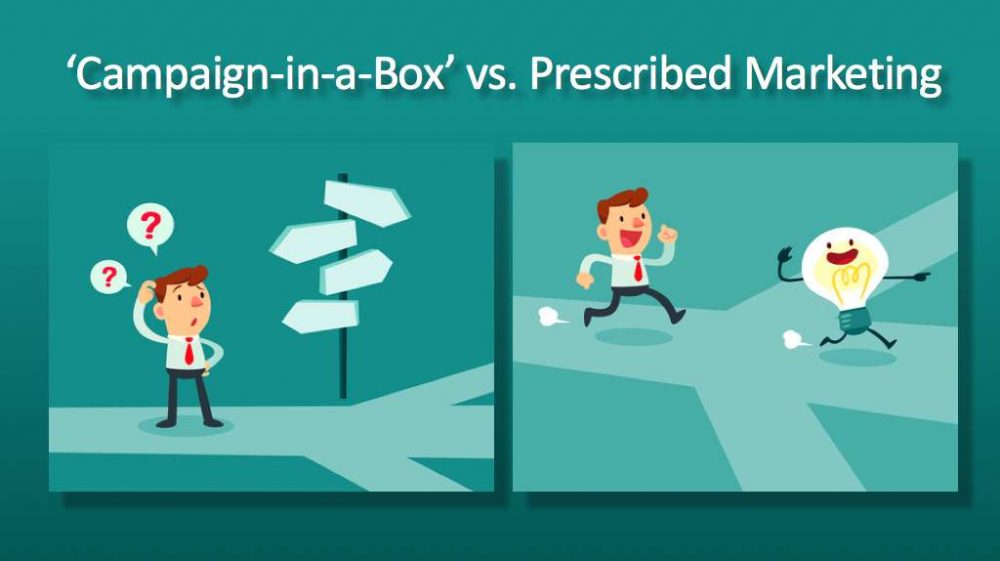In today’s noisy marketing environment, it’s no surprise insufficient channel visibility is a top challenge for technology marketers — ranking right up there with cumbersome processes, according to a 2017 IDG report on the state of channel marketing.
This is understandable when you consider that MSPs (managed services providers) are increasingly calling the shots, accounting for a larger share of SMBs’ and enterprises’ IT spending according to an AMI-Partners study cited by Channel Partners Online. The study finds that while the average MSP works with more than 15 technology vendors, they are also becoming more selective with the vendors they choose.
As more value-added resellers (VARs) adopt the MSP model (a growing trend according to AMI-Partners), channel marketers will need to find new, more effective ways to cut through the noise. And you need to do it without losing sight of partners’ ultimate goal, which is to identify and qualify prospective customers.
Dawn of the Marketing Asset Library
One approach that emerged early in the decade to help channel marketers gain mindshare and support partners’ lead generation efforts is what has traditionally been called a “campaign-in-a-box.” If you’re unfamiliar with the approach, a campaign-in-a-box is essentially an asset library or marketing resource center linked to your website to give partners quick, easy access to content and promotional materials.
Usually accessible via a partner portal, a typical campaign-in-the-box enables navigation by content category and provides editing and customization tools to tailor content to partners’ brand and positioning. A more robust campaign-in-a-box might also supplement assets with an overview of pain points and audiences targeted. It may even provide social media sharing tips, and map various pieces of content to specific steps in the customer journey.

Digital Transformation Complicates Channel Marketing
Back in the day, a campaign-in-a-box of this sort may have sufficed as an efficient way to build channel relationships by providing value-added marketing support to partners, and raising your competitive profile in the process.
But thanks to digital transformation and the growing pressure on partners to deliver more strategic and customized solutions to customers, channel marketing is a lot more complex than it used to be. Now, you’re probably finding that a traditional campaign-in-a-box is failing to grab the mindshare you need in a crowded market.
 Putting the onus on partners to sift through assets and tutorials to build, schedule and deploy campaigns increases the chances your well-thought-out marketing strategies — the plans you mapped to the different stages of the customer journey — will be mismanaged and disjointed.
Putting the onus on partners to sift through assets and tutorials to build, schedule and deploy campaigns increases the chances your well-thought-out marketing strategies — the plans you mapped to the different stages of the customer journey — will be mismanaged and disjointed.
Most partners simply don’t have the time, human resources or marketing context to create and launch campaigns easily and effectively. In addition to reflecting poorly on your brand and your partners,’ the results are likely to hinder opportunities to make connections and engage in meaningful conversations with customers and prospects.
Prescribed Marketing Takes Channel Marketing Further
Today, it’s not enough to just give partners access to a campaign calendar and collection of content assets and say, “run with it.” You need to take your campaign-in-a-box further and deploy a system that helps you prescribe in a deliberate and coordinated way not only what you want your partners to promote, but also how and when to promote it.
This is what we call “prescriptive” or “prescribed marketing.” It builds on the concept of the campaign-in-a-box by relieving your partners of the complexities of campaign management and putting control back where it belongs — with you, the technology marketer.
How Prescribed Marketing Works
With prescribed marketing, bringing your partners out-of-the-box demand generation campaigns is much simpler than with traditional, campaign-in-a-box approaches. And, it gives you a lot more influence over the results. A big reason for this is that you no longer have to worry whether partners have the time to visit your website, login to the partner portal, research your promotions and THEN wade through a sea of content to choose and customize assets to support them.
Instead, you use a combination of content and system design to proactively guide partners through clearly mapped demand generation campaigns, feeding them the content and tools they need to accurately promote your campaigns at every stage of the customer journey.
Every partner receives a weekly email digest that highlights the content you want promoted each week. Depending on target audience and the schedule and profile of the partner, these personalized content assets can include eBooks, solution briefs, video demos, white papers and customer success stories. Each is accompanied by a set of tips, tools and templates to help partners easily share them through various communication channels such as websites, blogs, email and social media.
The weekly digest also includes a theme to give partners context for connecting campaign elements, as well as descriptions of the content provided and guidelines for explaining your unique selling propositions and sales methods.
5 Prescribed Marketing Benefits
A prescriptive, step-by-step approach to channel marketing delivers a host of mutually-rewarding benefits to you, the technology vendor, and your channel partners. Here are 5 for starters:
-
More mind share. The regularity of weekly communications with partners improves channel visibility for technology marketers. At the same time, it helps partners strengthen their relationships with customers by providing more targeted and timely product and support resources.
-
Simplicity. No partner marketing program can succeed if it’s too cumbersome to execute. A combined push-prescription model provides focus and ease-of-use to eliminate barriers to adoption.
-
Flexibility. The ability to adapt is vital in modern, dynamic marketing environments. This comes from being conversant in multiple communication channels and content formats and knowing how to use actionable analytics to respond better to customers. Your partners will value the power of the marketing tools you deliver through prescribed marketing — and achieve results that will come back to you.
-
Brand awareness. While partners’ top priority is identifying and qualifying leads to grow their own businesses, they also serve as advocates for your technology products and services. Making it easy for partners to promote their brand with customized blogs, social media posts, logos, banner ads and other positioning elements further validates your competitive leadership.
-
Measurable results. The success of any channel marketing program hinges on its ability to align partners’ goals with yours. That means helping partners build business while enabling you to rise above the noise in turbulent channel environments. Communicating clear expectations (e.g. how often partners should post content) and benchmarks for success (e.g. how much activity should a campaign generate) is essential to this process. A prescribed marketing platform gives you a forum for providing target metrics such as these and motivating your partners by the goals you set.
To learn how ContentMX can help you take channel marketing further on a prescribed marketing platform, contact us.

